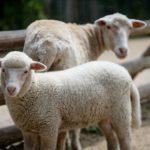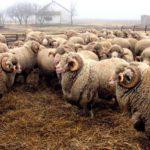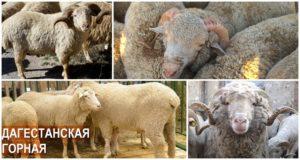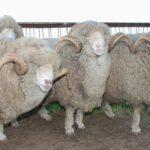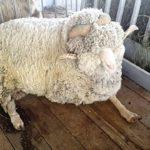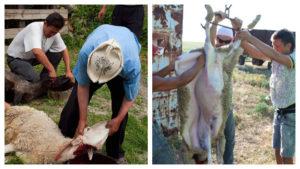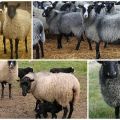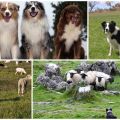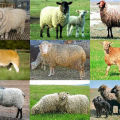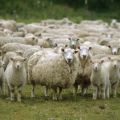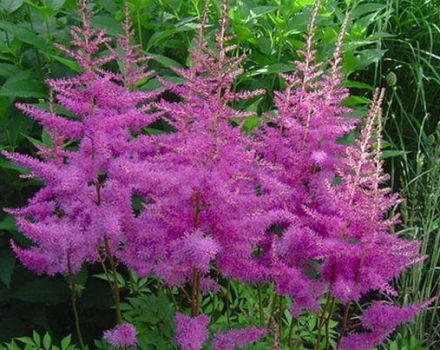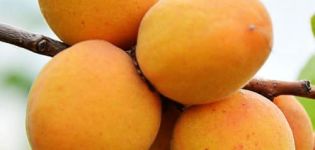Description and characteristics of the Askanian sheep breed, the rules for their maintenance
Otara in a subsidiary farm is wool, meat, milk. Animals are unpretentious, quickly gain weight. That is why they have existed next to a person for centuries. People are breeding new breeds, trying to make animals large, resistant to diseases, and easy to keep. All these criteria are met by the sheep of the Askanian breed, which are kept in small private farms and large farms.
History of the breed
Work on raising Askania fine-wool sheep has been carried out since 1925 in the Ukrainian reserve Askania-Nova. It was decided to cross the local merino with the American rambouille sheep. As a result, it was planned to get large animals with high-quality wool. By 1935, a new wool and meat breed appeared, perfectly adapted to keeping in local conditions. The Askanian breed is widespread in the southern regions of Russia, throughout Ukraine.
Description and characteristics of the Askanian sheep
The animals are large, with white or yellowish hair, pronounced fleshiness. There are 1-2 folds on the neck. Grease can be white, yellowish or colored in beige shades. It protects the coat from dirt and moisture.
Sheep of the Askanian breed belong to the meat-wool type of animals. They have the following characteristics:
- developed muscle mass;
- strong bones;
- sheep weigh up to 60-65 kilograms, rams - up to 110-115 kilograms;
- height at the withers up to 65-70 centimeters in sheep and 80-85 centimeters in rams;
- lack of horns in sheep and their presence in rams;
- the presence of dense white wool up to 10-11 centimeters long in males and 8-9 centimeters in ewes.
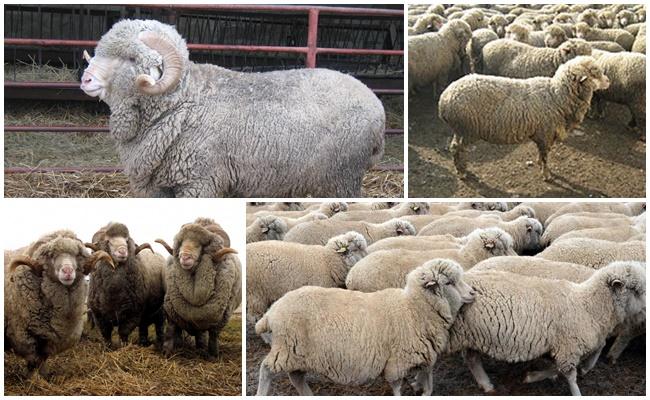
Sheep of the Askanian breed can produce up to 20 kg of wool per year. It covers not only the back and sides, but also the belly and legs of the animals. Wool sheared from ewes is of better quality, but it is less, up to 8 kilograms. Animals grow quickly, sheep have high fertility, they bring 2 lamb per lamb. The first lambing is characterized by the appearance of 1 lamb.
Representatives of this breed perfectly convey their own hereditary qualities when crossed. That is why there are so many intra-breed types of Ascanian sheep.
Positive and negative sides
The breed is over 80 years old, while still being popular. Sheep are kept on small farms and also grown on an industrial scale. The advantages of the breed are:
- The size. These are the largest merino.
- The amount and taste of the meat obtained. Some individuals reach a weight of 150 kilograms, meat without a specific smell with a small amount of fat.
- The ability to transmit the hereditary characteristics of the breed.Its representatives are used to improve livestock.
- The quality and volume of the resulting wool.
- Good fertility of ewes and fast growth of lambs. Bright in 18 months gains the weight of an adult sheep.
Lamb meat is tender, odorless and dietary. Wool is used in textile production. There are few disadvantages of the breed:
- grease is released slightly;
- the coat gets very dirty on the back;
- the length of the coat varies from site to site.
Since there are much more advantages, the breed is kept in Russia and Ukraine, and is often used to improve the characteristics of the existing livestock. The meat is suitable for the nutrition of the elderly and weak people, it has an excellent taste.
Maintenance and care rules
Animals are unpretentious in food. In the summer they are grazed; during the cold weather, it is necessary to equip a sheepfold. The floors in it are made even, the litter is periodically changed. Lighting is provided in the sheepfold. Drafts and tightness are harmful to animals; in the sheepfold, a temperature of 6-8 ° C should be provided. Fresh water is required.

They feed 3-4 times a day. Drink after feeding. Be sure to give salt, it is placed next to the drinking bowl. It normalizes digestion. It is necessary to inspect the livestock, check the condition of the coat and hooves. Hooves must be periodically trimmed to prevent the appearance of hoof rot. The flock is sheared in the spring when the temperature rises to 18-22 ° C. Cut with sharp scissors or electric clippers. Cut carefully so as not to injure the animal. Wounds and scratches after cutting are disinfected.
What to feed
In summer, the main source of nutrition for the herd is succulent feed. Before pasture, you should inspect the pasture, it should not be bleached, dope, celandine, milkweed.
Young twigs of trees are useful to them. They give apple, pear, willow, alder poplar branches. In winter, the animals are fed with hay, silage, root crops. Breeding sheep are provided with hay, mixed fodder and vitamins are added.
Breeding of Askanian sheep
After 1935, work on improving the breed continued, the task was set to improve the quality of wool and clipping from each head. From 1959 to 2000, several intra-breed types were bred with crossbred wool used for the production of fabrics and knitwear. For example, Tavrichesky merino, sheep of the Askanian black-headed type, Dnipropetrovsk meat and wool sheep. Today in Ukraine there are several breeding farms specializing in the breeding of Askanian sheep.
Frequent illnesses
They are conventionally divided into 3 groups: non-infectious, helminthic invasions, infectious diseases. With improper feeding in sheep, rumen flatulence occurs. Animals can be poisoned by poisonous plants in the pasture. Pneumonia develops when kept in a cold and damp room, untimely haircut. Animals must be worm driven. This is done on a quarterly basis.
Infectious diseases include: listeriosis, smallpox, bradzot, foot and mouth disease. For the treatment of animals, you need to call a veterinarian, the sick sheep are separated from the flock. Most infectious diseases require quarantine.
Breeding sheep is a profitable business. Pedigree animals on the farm allow you to quickly recoup costs and start receiving the long-awaited profit, one of the most popular is the Askanian breed.
